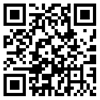Type I OGL Development and Field Trial
Time:09 Apr,2025
<p style="text-align: center;"><img src="/ueditor/php/upload/image/20250410/1744270220576625.png" title="1744270220576625.png" alt="4.png"/></p><p style="text-align: justify;"><span style="font-family: arial, helvetica, sans-serif; font-size: 12px;">The results of the base fluid traction studies in the previous section led to an investigation on how the three different types of base fluids (mineral/PIB, PAO and UPP) would perform as a Type I, or grease type, OGL. The grease type OGLs prepared for this study were lithium greases with a kinematic base oil viscosity at 40°C of ~2,000 cSt. The base oil compositions can be seen in Table 5.
Component Mineral, % weight PAO, % weight UPP, %weight
Brightstock 150 68
PAO-100 87
Polyisobutylene (Mn2000) 32 13
UPP 100 80
UPP 2000 20
ASTM D445 Results
Kinematic viscosity at 40°C, cSt 2074 2123 2145
Kinematic viscosity at 100°C, cSt 99.1 145.5 154.5
Viscosity index 121 172 179
Table 5—2000 cSt (at 40°C) base oil formulations.</span></p><p style="text-align: justify;"><span style="font-family: arial, helvetica, sans-serif; font-size: 12px;">It was noted that the base oil composed of strictly UPP had a higher viscosity index (VI), which may translate into better thermal stability of the finished OGL compared to the others (Ref. 8). A high kinematic viscosity index indicated that the viscosity of the fluid will not change drastically as temperature increases (Ref. 7). Moving forward, the base oils from Table 5 were used for lithium greases and blended with and combination of additives and lubricating solids, targeting a NLGI grade 0, which can be seen in Table 6.
Component Mineral OGL, % weight PAO OGL, % weight UPP OGL, %weight
Lithium soap thickener 5 5 6
Polyisobutylene 87
(Mn 2000) 25 10
Brightstock (BS150) 53
PAO 100 68
UPP 100 62
UPP 1100 15
Additive Package 11 11 11
Solid lubricant 6 6 6
Table 6—Finished Type I OGL formulations.
The additive package in Table 6 includes additives for extreme pressure, antiwear, yellow metal corrosion and tackifier. Each of the finished OGLs were then evaluated for the properties required by the example specification from Table 1. The results from this testing can be seen in Table 7.
Property Test method Requirement Mineral OGL PAO OGL UPP OGL
Worked Penetration D217 n/a 400–430 400–430 400–430
Copper strip corrosion ASTM D4048 2A max 1B 1B 1B
Rust protection ASTM D1743 Pass Pass Pass Pass
4-ball wear, wear scar diameter, mm ASTM D2266 0.70 max 0.70 0.68 0.45
4-ball weld point, kgf ASTM D2596 800 pass 800 pass 800 pass 800 pass
LWI, kgf 120 min 149.3 139.3 143.6
Table 7—Performance Testing on Experimental OGLs.
All three OGLs met the requirements of the defined specification, however, the UPP OGL had a smaller wear scar (ASTM D2266) compared to the other two OGLs.
To correlate the laboratory testing to industrial field applications, FZG testing was chosen as an additional metric of testing. FZG testing is used to evaluate the load carrying capacity of a fluid or grease via scuffing damage. Gear scuffing occurs when two teeth in a meshing gear set briefly adhere together and are then torn apart as the gears continue to rotate. This type of damage can lead to loss of contact geometry, leading to vibration, noise, and potential gear failure. As lubricant fluids thin under increased temperatures, load carrying additives become a necessity for gear protection.
In the FZG test, two specially designed gears are installed in a test chamber that will contain a specified amount of lubricant. These gears are manufactured to have very high sliding conditions, which creates an environment for scuffing to occur. The larger (wheel) test gear is connected to a shaft and motor, while a second smaller (pinion) test gear is connected to a parallel shaft containing a torsion coupling. A static load can be applied across the torsion coupling. These predefined loads are referred to as load stages and are the reported criteria once the scuffing failure limit has been exceeded. Most FZG tests run from load stage 1 to load stage 12 or failure, whichever occurs first. The extent of scuffing damage is assessed via visual inspection at the completion of each load stage (21,700 revolutions). The temperature at the end of each load stage is also observed.
Different FZG procedures can vary in motor speed, driver direction, gear width, gear temperature, and gear profile. Two common procedures are A/8.3/90 and A/2.8/50. A/8.3/90 typically follows the industry specifications ASTM D5182, CEC L-07 or ISO 14635 and uses A20 gears (20 mm thick), at 90°C starting temperature, rotating forward at a pitch line velocity of 8.3 m/s. A/2.8/50 has a lower velocity of 2.8 m/s and starting temperature of 50°C designed for testing gear greases, which follows ISO 14635-3 specification.
FZG A/2.8/50 (typical grease conditions) was executed examining the three samples (Table 5) over 12 load stages in the same testing stand. Using the ISO procedures, the gears are weighted after load stage 4. All three greases passed the load stage 12. Operational temperatures and energy consumption were measured using the Mineral OGL as the baseline material. Figure 4 shows the operating temperature of each gear at the end of load stage 12.</span></p>

